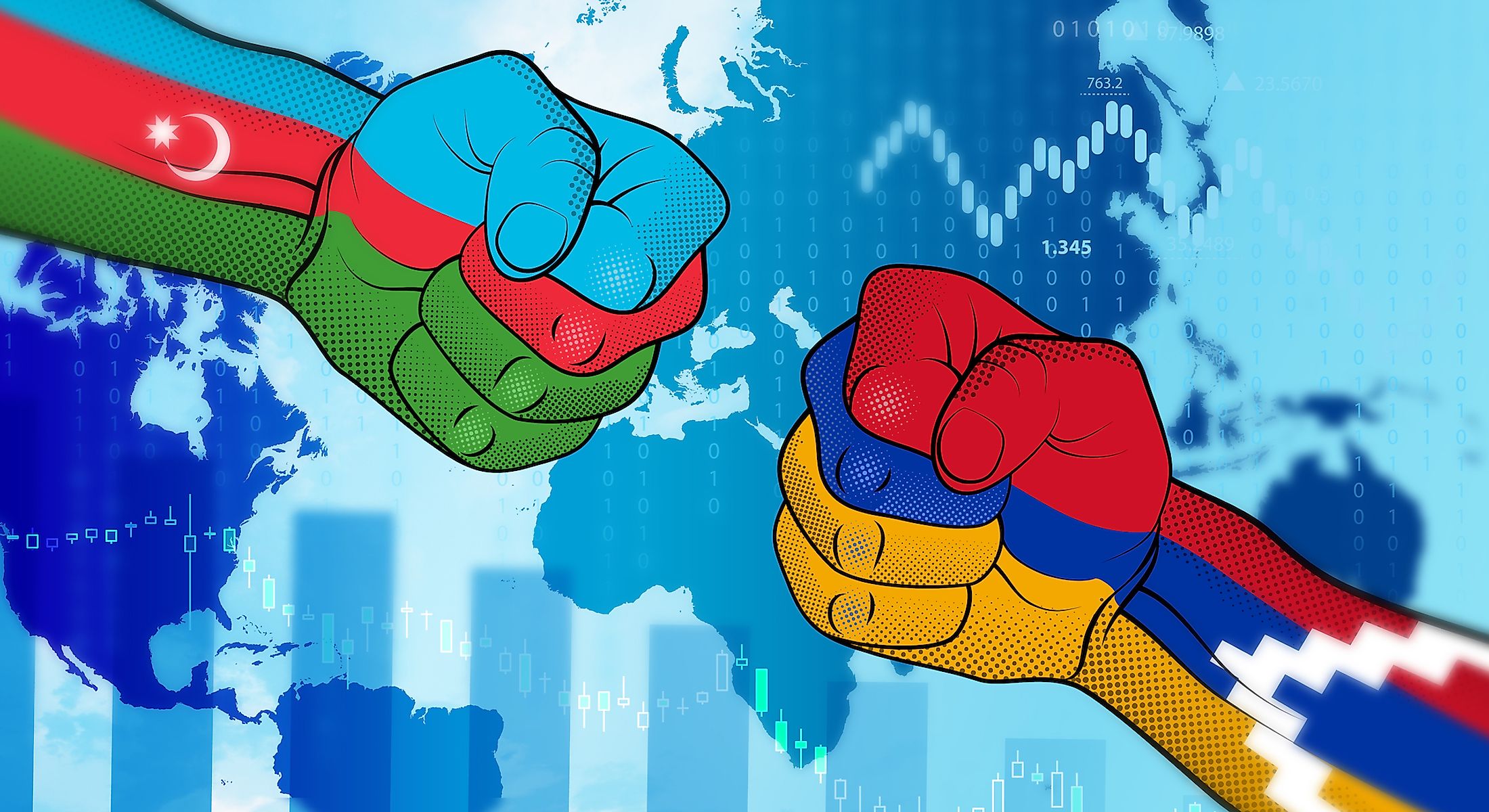
Nagorno-Karabakh
The Caucasus Mountains is a strategically important region located at the intersection of Asia and Europe. The Caucasus is divided into two main regions; North Caucasus and South Caucasus. The North Caucasus covers part of Eastern Europe, majorly Russia, while the South Caucasus corresponds with Azerbaijan, Armenia, and Georgia. Different powers, both Muslims and Christians, have vied for the region’s control for centuries. Nagorno-Karabakh is a disputed territory in the South Caucasus located within Karabakh. Although the disputed territory is recognized internationally as part of Azerbaijan, it is an ethnic-majority Armenian region controlled by the Republic of Artsakh (formerly known as the Nagorno-Karabakh Republic).
Location And Geography
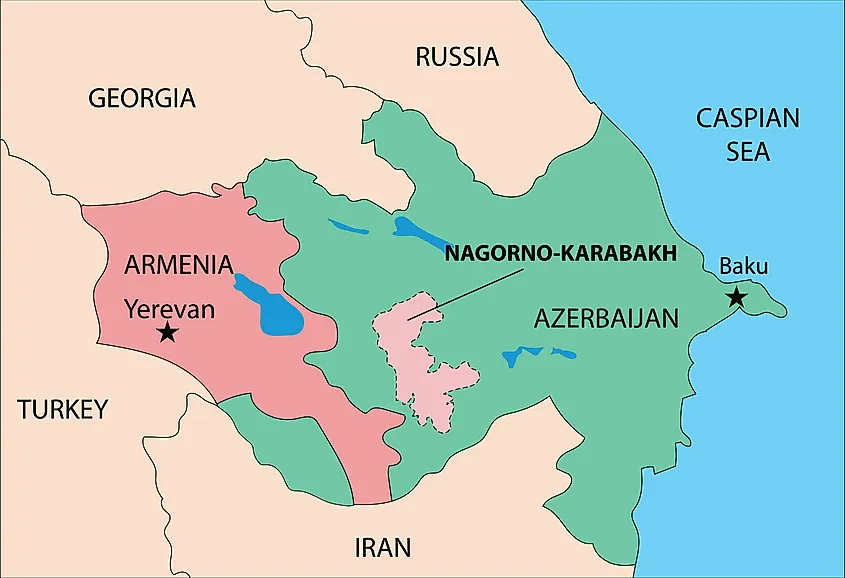
Nagorno-Karabakh is a landlocked area in Transcaucasia (South Caucasus) located in Karabakh, a geographic area lying between Zangezur and lower Karabakh and covering Lesser Caucasus. Karabakh is mostly a mountainous region extending from eastern Armenia to Southwestern Azerbaijan. Nagorno-Karabakh is located in southwestern Azerbaijan and covers approximately 4,400 square kilometers, with the entire area located at an average elevation of 1,100 meters above sea level. It is equated to the historical Nagorno-Karabakh Autonomous Oblast in Azerbaijan Soviet Socialist Republic. However, the Nagorno-Karabakh Republic presently controls 8,223 square kilometers.
The Nagorno-Karabakh region has a varied landscape, comprising Kura lowlands, dense forest, flat valleys, and mountains. The northern edge is characterized by tall mountain ridges, with the tallest peaks in the region being the Great Kirs and Murovdag, located near the Hadrut and Shusha districts. Dense forests hornbeam, oak, and beech characterize lower mountain slopes, while alpine meadows and birchwood are common higher up the mountains. Orchards, vineyards, and mulberry groves also grow in the valleys across the region.
History
The ancient population of the Nagorno-Karabakh region comprised several indigenous and migrant tribes who later intermarried with the Armenians who came to the region around the 2nd or 4th century BC. Artsakh was the province of the Armenian Kingdom from 180 BC to the 4th century. In 387 AD, Artsakh, alongside Utik (another Armenian province), became part of the Caucasus Albania, which had strong Armenian influence. At the time, the majority of the Artsakh’s population were Armenians who had flourishing culture and civilization.
Muslim Arabs conquered the Nagorno-Karabakh in the 7th century during the Muslim conquest of Persia, with the Caliphate endorsing local governors to rule the region. The House of Khachen, established in 821 by Prince Sahl Smbatian, ruled Artsakh as Principality of Khachen, which existed until the 19th century. It was one of the five principalities in the Karabakh region ruled by Melik (prince).
Nagorno-Karabakh Under Soviet Rule
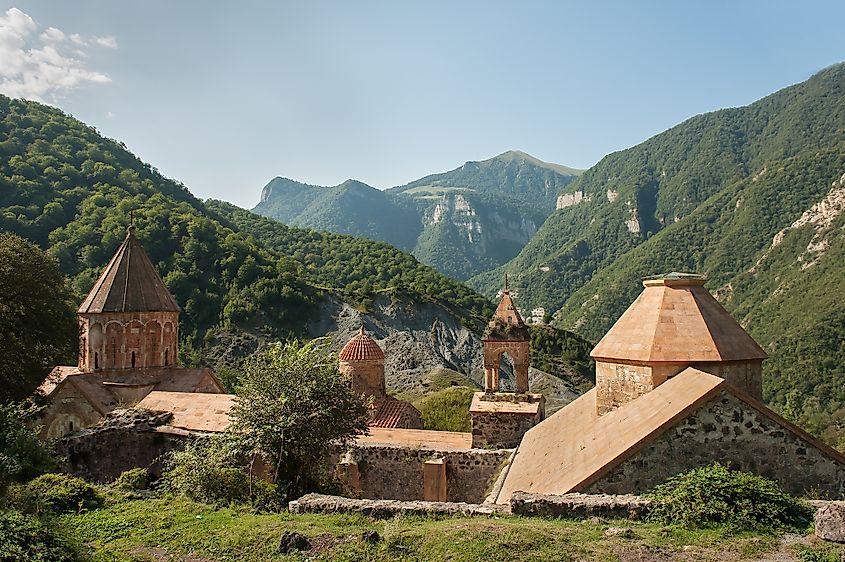
Russian Empire acquired Karabakh (including Nagorno-Karabakh) in 1805 through the Kurekchay Treaty and made it its protectorate. According to this treaty, signed between Pavel Tsitsianov (representing the emperor) and Ibrahim Khalil Khan on behalf of Karabakh, Russians were to recognize the Khan and his descendants as the region’s sole rulers. Persians finally ceded Karabakh in 1813, following the Russo-Persian War. The rest of the South Caucasus became part of the Russian Empire in 1828, following the signing of the Treaty of Turkmenchay.
The present dispute over Nagorno-Karabakh stems from the Sovietization of the South Caucasus (Transcaucasia) by the Caucasian Bureau and Joseph Stalin. Stalin was the Soviet Union’s Commissar of Nationalities in the early 1920s. Karabakh was part of the short-lived Transcaucasian Democratic Federative Republic, which dissolved into present-day Georgia, Azerbaijan, and Armenia. Between 1918 and 1920, Azerbaijan and Armenia contested several regions, including Karabakh, resulting in short wars. Nagorno-Karabakh’s First Armenian Assembly declared the region self-governing in 1918 and established the government and National Council.
After the First World War, the British confirmed Khosrov bey Sultanov, appointed by the government of Azerbaijan, as the Governor-General of Zangeur and Karabakh. Although Karabakh Armenians rejected the decision, the National Council finally agreed to it, while those in other regions within Karabakh opposed the agreement. In April 1920, while Azerbaijani forces fought Armenian forces in Karabakh, Bolsheviks occupied Azerbaijan, followed by Georgia and Armenia in 1921. When Azerbaijan and Armenia became Sovietized, Nagorno-Karabakh became a minority enclave in Azerbaijan. The autonomous included mainly the Armenian villages, with Shusha as its administrative center.
Conflict And Secession
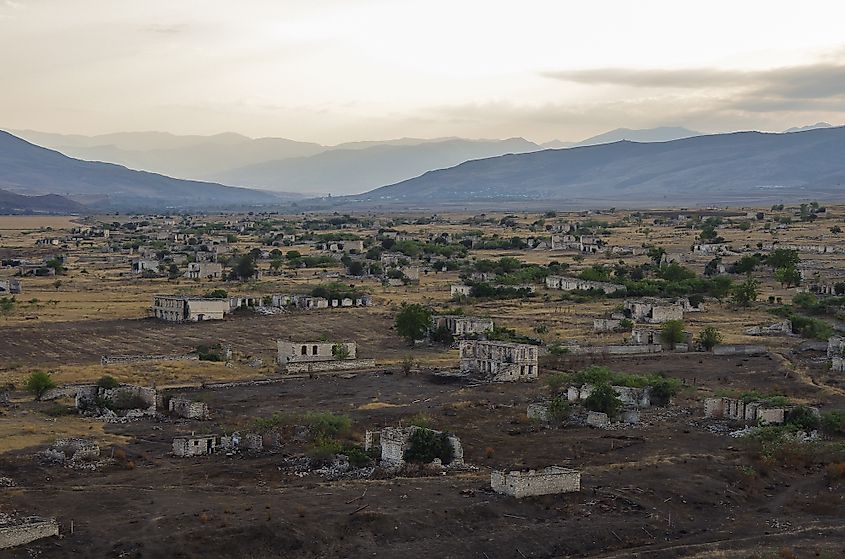
The Karabakh region, including Nagorno-Karabakh, remained peaceful and developed quietly during the Soviet era. However, the Nagorno-Karabakh question re-emerged in the 1980s towards the end of the Soviet era. In 1988, the Armenians in Nagorno-Karabakh, with the support of Armenian SSR, began agitating for the transfer of autonomous oblast to Armenian SSR. However, the Soviet government and Azerbaijan SSR opposed this demand. The disagreements led to the first Armenian-Azerbaijani conflict, known as the Askeran clash.
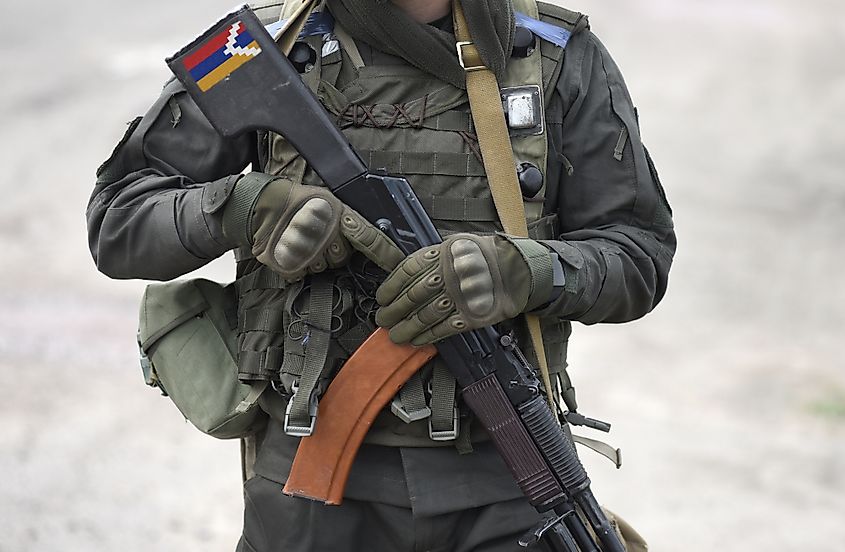
In 1989, the Soviets transferred Nagorno-Karabakh to Azerbaijan, causing the National Council and Armenian Supreme Soviet to proclaim the region’s unification with Armenia. However, the Azerbaijani government abolished the autonomous oblast and brought the territory under its direct control in November 1991. One month later, the Armenians in Nagorno-Karabakh voted to create an independent state. After the two countries gained independence from the Soviet Union in 1991, Azerbaijanis and Armenians in Nagorno-Karabakh went into full-scale war. In the early 1990s, the Armenian forces in Karabakh controlled much of Southwestern Azerbaijan, including territories connecting to the region. A series of negotiations resulted in a ceasefire on May 12, 1994.
Further Conflicts And Ceasefire Agreement
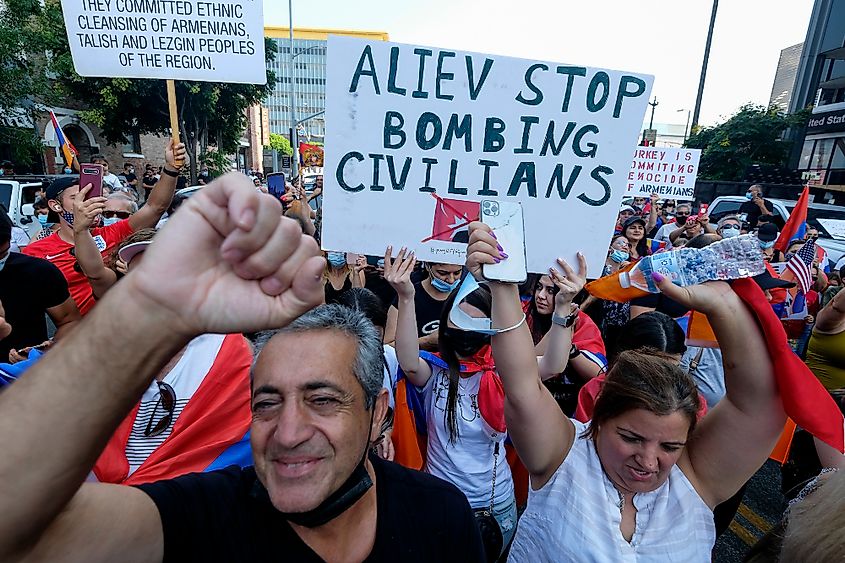
Despite the ceasefire agreement, periodic conflicts between Azerbaijani and Armenian soldiers in the region have led to several fatalities. Several bodies, including the Parliamentary Assembly of the Council of Europe and Organization of Islamic Conference, have condemned ethnic cleansing and adopted resolutions to contain conflicts in the region. In 2008, President Ilham Aliyev (Azerbaijan) and President Serzh Sarkisyan (Armenia) signed an agreement and committed to resolving the conflict over the Nagorno-Karabakh region.
The search for a political solution to the Nagorno-Karabakh question is complicated further by the region’s political aspiration. The Republic of Nagorno-Karabakh considers itself an independent state and has held several elections and a referendum, which Azerbaijan declared unlawful. Episodic classes took place in the region throughout the 2010s. In April 2016, the opposing forces clashed in the region, with the Armenians accusing Azerbaijan of plans to capture the territory. 12 Azerbaijani and 18 Armenian forces were killed during the clash. On September 27, 2020, another war also broke out in the region, with both sides reporting civilian and military casualties. A territorial ceasefire agreement was signed on November 10, 2020, between Armenia, Azerbaijan, and Russia, with Armenia, forced to return all Azerbaijani territories surrounding Nagorno-Karabakh.











